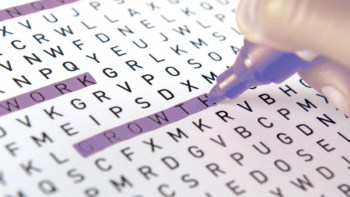
“Music has been very disrupted due to the pandemic.”
When Philippe Bourrianne spoke these words at the annual meeting of the American Physical Society’s Division of Fluid Dynamics in late November, I nodded vigorously at my laptop. Before the pandemic, I was a keen amateur singer, trotting along to rehearsals with the Bristol Choral Society every Wednesday after I finished work in Physics World’s office in Bristol, UK. Since the coronavirus arrived, though, a mixture of government regulations and a fear of getting caught in a super-spreader event like the one that struck Washington’s Skagit Valley Choir (61 singers at a March 2020 rehearsal, 52 confirmed or probable cases of COVID-19, two deaths) has kept me away. So when I read that Bourrianne, a fluid dynamics expert, would be presenting about the flow of exhaled air (and any airborne pathogens within it) in opera, I cleared my schedule to hear his talk.
In his presentation, Bourrianne described how he and colleagues in Howard Stone’s research group at Princeton University, US teamed up with musicians at New York’s Metropolitan Opera to investigate what happens to singers’ breath during a performance. Using an infrared camera, the Princeton researchers monitored the flow of warm, exhaled carbon dioxide from several Met artists, including soprano Angel Blue, as they performed fluid, vowel-rich arias and choppier, consonant-heavy recitatives with and without a surgical face mask. They also performed similar tests on orchestral musicians such as trombonists, trumpeters and oboists, with bell covers taking the place of face masks.
What Bourrianne and colleagues found is that wearing a mask (or playing an instrument with a bell cover) drastically reduces how far the musician’s breath can travel, from well over two metres down to just 10–30 cm. That’s perhaps not so surprising. Within this overall finding, however, they uncovered some interesting wrinkles.
Before they conducted their study, which is published in Physical Review Fluids, the researchers expected that opera singers would have a higher risk of spreading airborne viruses because they must sing loudly to project their voices across large performance spaces without a microphone. In fact, the team’s data showed that the velocity of Blue’s exhaled breath was lower when she was singing arias (such as “Casta Diva” from Vincenzo Bellini’s Norma) than when she was speaking. The team’s new hypothesis is that normal speech may actually carry a higher risk of spreading respiratory disease than this type of singing because it contains more spittle- and air-burst-generating consonants. A further unexpected finding is that because the oboe is played with a very low flow rate, it may be riskier than other instruments because musicians must quickly and forcefully expel their unused breath outside the instrument as they play, limiting the effectiveness of bell covers.
But what does it sound like?
One thing Bourrianne and colleagues didn’t study, though, was the sound singers produce while masked. For that, I tuned in to a different conference, this one organized by the Acoustical Society of America (ASA). Thomas Moore is a physicist at Rollins College in Florida, US, and one of his pandemic research projects has been to analyse the acoustic effects of different types of face mask. “When you sing or speak, there’s quite a bit of exhaled aerosol that comes out of your mouth – a miasma of particles and gases,” Moore told the audience at an ASA press briefing on 1 December. “The idea of putting a mask on is to stop that.”
The problem, he went on, is that “no-one would hire a soprano if she sounded like she does wearing a mask”. Basic cotton two-ply masks are especially bad for singing, as they excel at blocking frequencies above 1 kHz. Although this is much higher than the frequency of normal human speech (a soprano’s high C, for reference, clocks in at 1046.5 Hz), it’s the higher frequencies and harmonics that lend sound its rich, distinct quality.
The good news is that not all face masks perform as poorly as cotton ones. From an acoustical perspective, the best option is a so-called singer’s mask. These devices incorporate a frame that keeps the fabric away from the wearer’s mouth, and the bigger ones form a resonant cavity as well. “It’s just like singing into a small room,” Moore explained. “Although they look a little funny, they are the way you want to go.”

How physics can help COVID-proof everyday life
In the longer term, Moore suggested that other solutions might come to the fore. “The real way we probably need to deal with exhaled contagion is to redirect the flow in the room,” he said. If air were brought in from the floor and allowed to exit through the ceiling of concert venues and other public spaces, he added, “significant progress against the contagion” would result.
For the time being, though, it’s tempting to conclude that these oddly shaped masks might provide a safer route back to performing for choirs and audiences alike. As Moore put it, “It would be sad if the next time we had a pandemic, we had to stop all of our arts like we did this time.”



